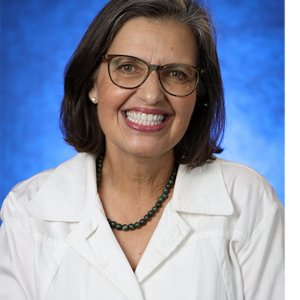So how did newly sworn Commissioners Liz Alpert and Shelli Freeland Eddie secure their seats while challenging establishment favorites Eileen Normile and Stan Zimmerman? While the town buzzed with talks of partisanship or of a rebuke of old political bosses (depending who you asked), an analysis of early precinct shows solid get-out-the-vote operations employed methodically by the winning campaigns determined the outcome.

ILLUSTRATION BY WOODY WOODMAN
Never Stop Campaigning
On election night, Alpert campaign manager Gabriel Hammett declared with exuberance, “Sarasota has changed forever!” Only time will reflect if indeed a long-term change in policy preference was reflected or ushered in this election cycle, but one change that proved apparent was a recognition that no successful campaign can stop expanding the base until the last vote gets cast.
Alpert, the winning candidate in District 2, came into the May elections as the favorite, having been the top vote-getter in a three-way race held on March 10. Her disciplined and targeted efforts led to every precinct she won in March also going her way in May. Opponent Normile also defended the precincts she won in March, and notably pressed hard to get new voters to polls that had not come out for the initial contest, but she was unable to expand her base at a greater rate than Alpert. The result was an identical precinct map and outcome in May with the swearing in of Alpert to a four-year term.
Meanwhile, Eddie pulled a more difficult feat in swinging District 3 her way in the May runoff after trailing incumbent Stan Zimmerman by 10 percentage points in March. She made up that deficit and then some, winning the seat by taking four of five precincts, even after failing to win a single precinct in the first election.
While some media outlets noted a low turnout for the election—just 18.7 percent citywide—much of that was because of dampened turnout in District 1, where there was no City Commission contest and voters only had to vote on two non-controversial charter amendments. Both District 2 and District 3 saw an increase in votes cast in the May election compared to March.
It must be noted that Normile matched Alpert’s efforts between elections nearly vote-for-vote. Alpert between March and May grew her base of supporters from 1,656 votes to 2,124 votes, an increase of 468 votes. Comparatively, Normile went from winning 1,449 votes in March to 1,882 votes in May, a growth of 433 votes. Through the campaign, both candidates fought hard to win the supporters of third-place finisher David Morgan, who won 689 votes in March, but they also brought in new voters who had stayed out of the first election altogether. In the end, a total of 4,006 ballots were cast in the District 2 race during the May election, while just 3,794 were cast for the March contest.
In District 3, the boost in voters can be ascribed almost entirely to Eddie’s campaign. Eddie ultimately received 894 votes, which was 310 votes more than she received in March. That margin was more votes than Matt Woodall, the third-place finisher eliminated in the March race, received in that contest; he earned 297 votes.
Meanwhile, Zimmerman’s campaign expanded its base very little. Zimmerman won 774 votes in May, just 24 votes more than the 750 votes he received in March. A total of 1,668 votes were cast for the District 3 race in May as opposed to 1,631 in March. The 37-vote difference is in fact greater than the growth in Zimmerman’s vote total, even without accounting for any of Woodall’s supporters going for Zimmerman in the second contest.
On Election Day, Zimmerman told SRQ he was relying on his long-term standing in the community and on a hefty push for early and absentee votes to carry him to victory. That wasn’t entirely misguided, as he had heavily outperformed Eddie in votes cast in advance of the March election, but thanks to the push by the Eddie camp leading into the ultimate contest, the strategy showed itself as folly.
Decided Before Election Day
In fact, a look at vote totals showed that even if no votes were cast on Election Day itself, the outcome would have been the same. While Normile in District 2 saw more supporters show up for early voting at the Supervisor of Elections office, winning 327 early votes to Alpert’s 286, a successful absentee voter drive assured Alpert’s victory. Some 1,078 absentee ballots were cast for Alpert, compared to just 885 for Normile. To top it all off, Alpert also won at the polls, taking 760 votes cast in the booth to Normile’s 670. In District 3, Eddie outperformed Zimmerman in all categories. She won 480 absentee votes to Zimmerman’s 426, early votes 78 to 54 and Election Day votes 336 to 294. That was a big shift from the March election, when Zimmerman would have won the three-way race outright based just on early and absentee votes—he had 509 pre-Election Day votes to Eddie’s 292—but Eddie forced a runoff by winning Election Day with 291 poll votes to Zimmerman’s 241. The change in voter totals can be attributed largely to a more sophisticated absentee voter drive on behalf of Eddie, by both her own campaign and outside supporters. Much of the discussion around this year’s election did center around partisan involvement. Indeed, Normile said before the election was done that political parties would decide the results of the races, “which is a shame,” she added. That said, more Republicans came out in District 2 on Election Day than Democrats, yet Democrat Alpert won on the polls over Republican Normile. In the end, a coalition of party interests and neighborhood opponents on Alpert’s side out-organized the counterforce of Republican regulars and neighborhood leadership working on Normile’s behalf.
In District 3, however, the presence of party support was indicated more clearly in the final numbers. Of note, Eddie in March also had to contend with a fellow Democrat in Woodall, an obstacle to full-throated party support that Alpert did not have to overcome. In the final days before the March election, party leaders left Woodall behind and threw their force behind Eddie, which may explain her Election Day surge.
Much more important in the May contest, though, was complete access to party resources in the push for votes before Election Day. With a campaign team run by lead consultants Christine Hawes and Andre Torkelson from Keen Campaigning and field director Zach Morrison, the team successfully pushed voters to cast absentee support and come out for early voting. So while Zimmerman saw the number of absentee votes on his behalf go down in May, even with Republican party leaders funding robocalls on his behalf, Eddie’s absentee totals leapt upward. Clarification: Keen Campaigning served as the lead campaign consultant for the Eddie campaign in the runoff. Ed James III served as campaign consultant only in an early stage of the campaign. A previous version of the story stated otherwise.
Still An Older Demo
For all the talk of new forces at play this election cycle, the electorate itself still largely resembled that of past contests. Full demographic information was not available at press time, but numbers from the March election showed the voter pool to be older and whiter than the city as a whole (and the city as a whole is old and white).
Voter turnout among 70-somethings in District 2 was above 47 percent, and among 80-somethings was over 46 percent. In District 3, 70-somethings turned out at rates of 40 percent. Of the 1,628 voters to participate in the District 3 race in March, 1,521 were white. Out of 3,787 who voted in District 2 in March, 3,609 were white. In both districts about 300 more female voters than male voters came out for the races. Of course, white voters in districts 2 and 3 severely outnumber minority voters, as older voters in both districts severely outnumber younger ones. Still, the difference in turnout only made the edge that much more apparent.
As for party make-up, District 2 actually has more registered Republicans than Democrats, about an 800-voter edge. But in March, 1,621 Democrats actually voted compared to 1,592 Republicans. In District 3, Democrats have the edge in registered voters, and had 780 voters come out in March compared to 642 Republicans.










